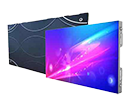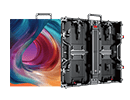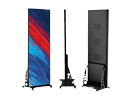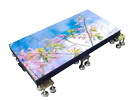LED video walls have redefined visual experiences in industries from retail to broadcast, but their long-term value hinges on one critical question: How many years can you expect them to perform at peak levels? While manufacturers often tout “100,000-hour lifespans,” real-world durability depends on technology choices, environmental factors, and proactive maintenance—details most articles overlook.
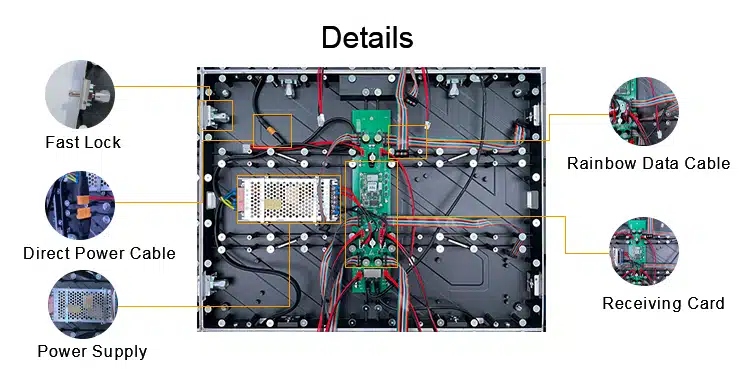
This guide cuts through marketing jargon to reveal:
-
The truth behind lifespan claims (and why 50% of walls degrade prematurely)
-
2025 breakthroughs in LED durability, including self-healing modules
-
Cost-saving maintenance protocols to extend screen life by 3–5 years
-
Red flags indicating your wall is nearing retirement
Breaking Down LED Video Wall Lifespan: More Than Just a Number
Industry Standard vs. Reality
-
Advertised Lifespan: 60,000–100,000 hours (≈6.8–11.4 years of 24/7 operation)
-
Real-World Average:
-
High-Traffic Public Spaces (Airports, Stadiums): 4–7 years
-
Controlled Environments (Corporate Boards, Studios): 8–12+ years
-
Why the Gap?
LEDs rarely fail outright; instead, gradual brightness decay and color shift degrade usability. By the time a wall reaches 50,000 hours, its brightness may drop 30%, making content appear washed out under ambient light.
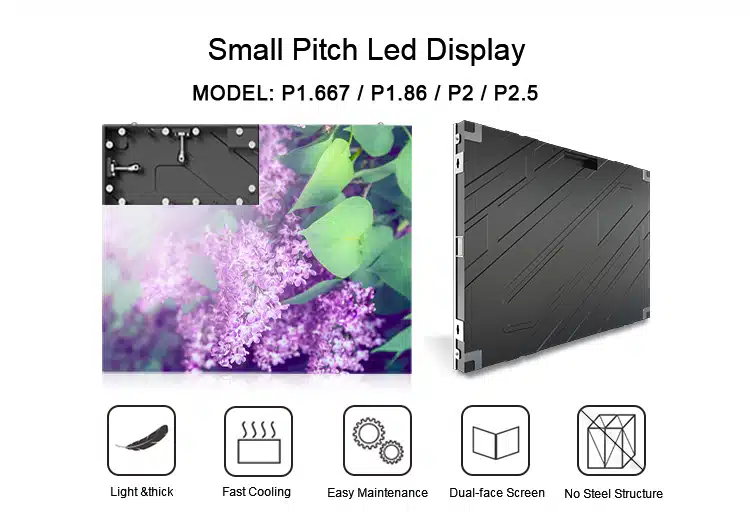
5 Factors That Secretly Shorten Your LED Wall’s Life
① Heat Management: The Silent Killer
-
Problem: Every 18°F (10°C) rise above 77°F (25°C) halves LED lifespan.
-
2024 Solutions:
-
Phase-Change Materials (PCMs): Absorb heat during peak loads (used in Leyard’s latest outdoor walls).
-
AI-Driven Fans: Adjust cooling based on real-time thermal sensors (cuts energy use by 40%).
-
② Brightness Overkill
Running LEDs at 100% brightness 24/7 accelerates decay.
-
Pro Tip: For indoor walls, 800–1,200 nits is often sufficient. Reduce to 50% brightness during off-hours via CMS scheduling.
③ Humidity & Particulate Damage
-
High-Risk Environments:
-
Coastal areas (salt corrosion)
-
Factories (oil/dust infiltration)
-
-
Protection Upgrade Costs:
-
GOB (Glue-on-Board): $120/sqm for anti-moisture resin coating
-
IP65 vs. IP54: 20% higher upfront cost, but 2X lifespan in harsh conditions
-
④ Power Supply Instability
Voltage fluctuations from cheap PSUs cause cumulative LED damage.
-
Data Point: A Las Vegas casino extended wall life by 3 years by upgrading to 80 Plus Titanium-grade power supplies (92% efficiency).
⑤ Content Type Matters
Static logos burn in faster than dynamic content.
-
Pixel Refresher Tools: NovaStar’s 2025 CMS update includes automatic pixel cycling to prevent static image damage.
SMD vs. COB vs. MicroLED: Which Lasts Longest?
| Technology | Avg. Lifespan | Failure Rate | Best Use Case |
|---|---|---|---|
| SMD | 60,000–80,000 hrs | 5–8% | Budget-friendly indoor |
| COB | 100,000+ hrs | <2% | High-end retail, control rooms |
| MicroLED | 120,000+ hrs | <1% | Premium rental/staging |
2025 Shift: COB adoption has surged to 45% of new installations due to lower maintenance costs, despite 20% higher initial pricing.
2025 Innovations Extending LED Wall Durability
Self-Repairing LED Modules
-
How It Works: Redundancy circuits automatically bypass dead pixels.
-
Pioneers: Unilumin’s “Smart Pixel” tech reduces visible failures by 90%.
Predictive Maintenance AI
-
Tool Example: Samsung’s MagicInfo 5.0 predicts failures 14 days in advance by analyzing voltage/heat trends.
-
ROI: Cuts emergency repair costs by 65%.
Swap-Enabled Designs
-
Modular Panels: Replace single tiles instead of full walls (saves 70% on EOL upgrades).
Maintenance Checklist: 4 Steps to Add 5+ Years
-
Bi-Annual Professional Calibration
-
Cost: 800–2,000/session
-
Benefit: Corrects color drift, ensures <5% brightness variance across panels.
-
-
Monthly Dust Mitigation
-
Use ionized air blowers (not cloths) to avoid micro-scratches.
-
-
Firmware Updates
-
2023–2024 patches from Absen/Leyard optimize power distribution for aging LEDs.
-
-
Environmental Sensors
-
1,500–5,000 for real-time humidity/temp alerts via CMS dashboards.
-
When to Retire Your LED Video Wall: 3 Warning Signs
-
Brightness Below 50% Initial Levels
-
Test with a lux meter; recovery is rarely cost-effective.
-
-
Color Consistency Failure
-
If Delta E exceeds 5.0 after calibration, viewers will notice discoloration.
-
-
Spiking Repair Frequency
-
15% annual maintenance cost (vs. initial purchase price) signals imminent EOL.
-
The Future: Are 20-Year LED Walls Possible?
Materials science breakthroughs hint at radical durability gains:
-
Gallium Nitride (GaN) LEDs: Lab tests show 2X lifespan over traditional chips.
-
Quantum Dot Hybrids: Sony’s prototype walls maintain 95% brightness at 80,000 hours.
However, obsolescence risk remains—today’s 2.5mm pitch may look archaic by 2030’s sub-1mm standards.

